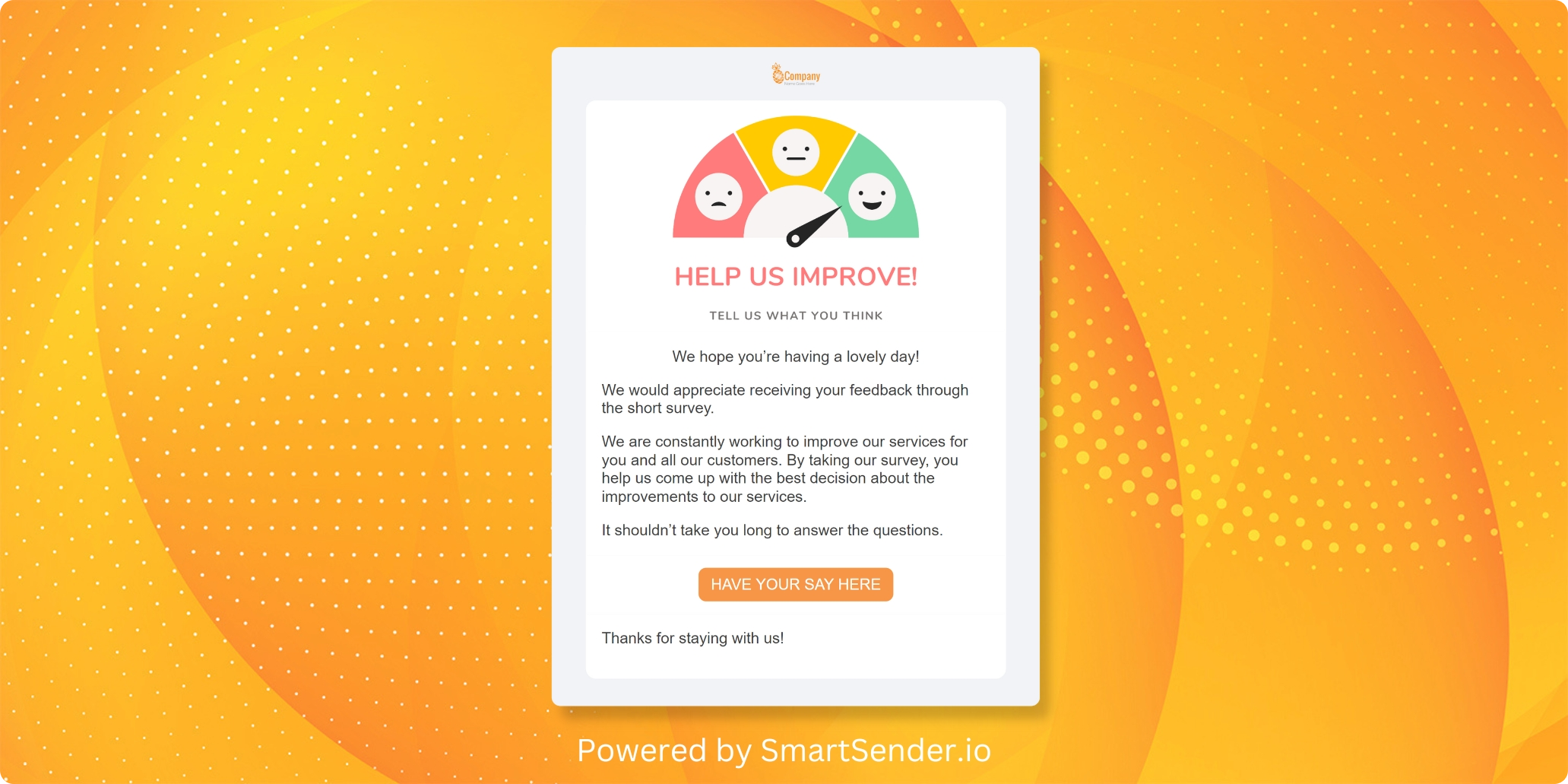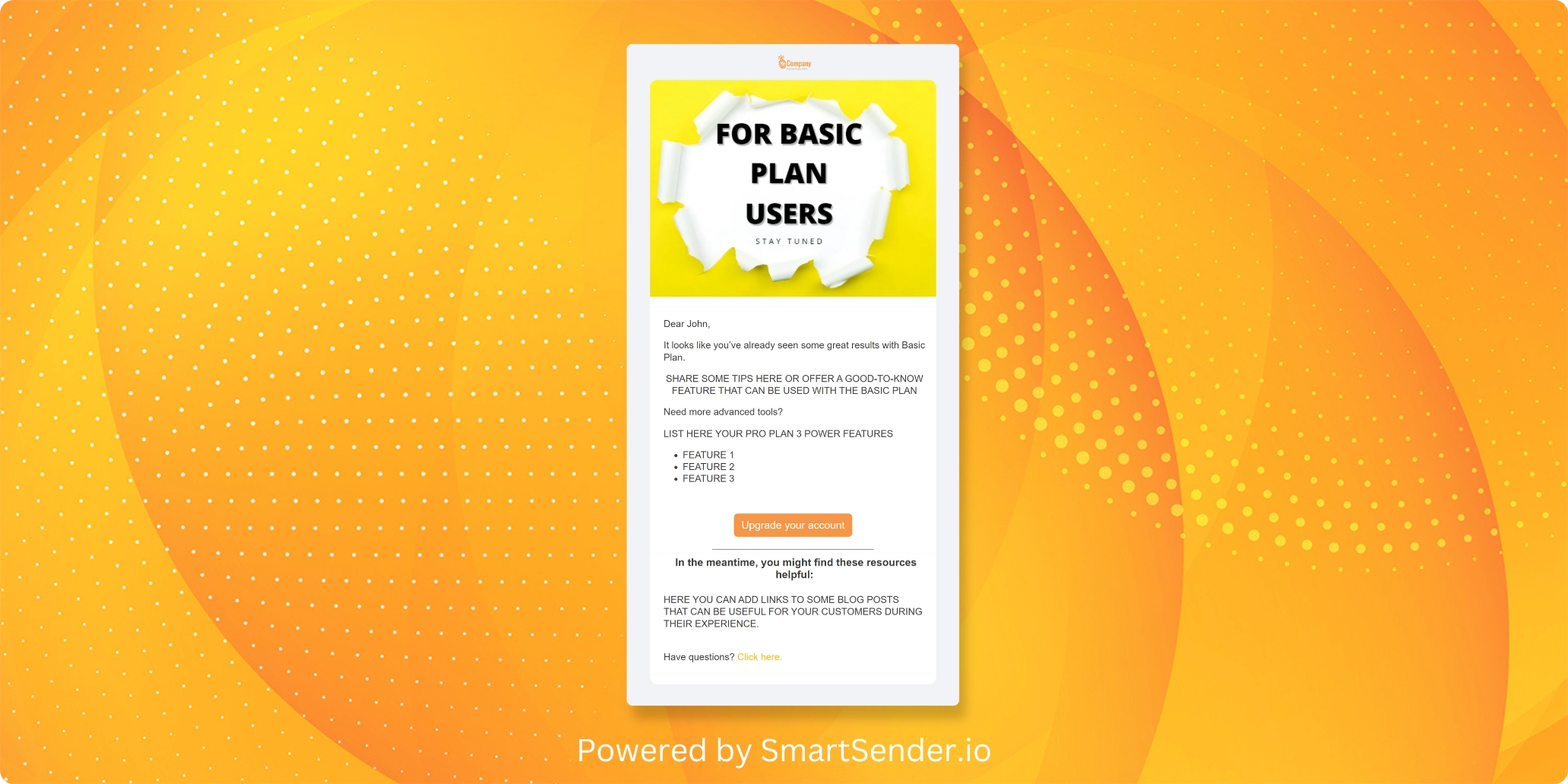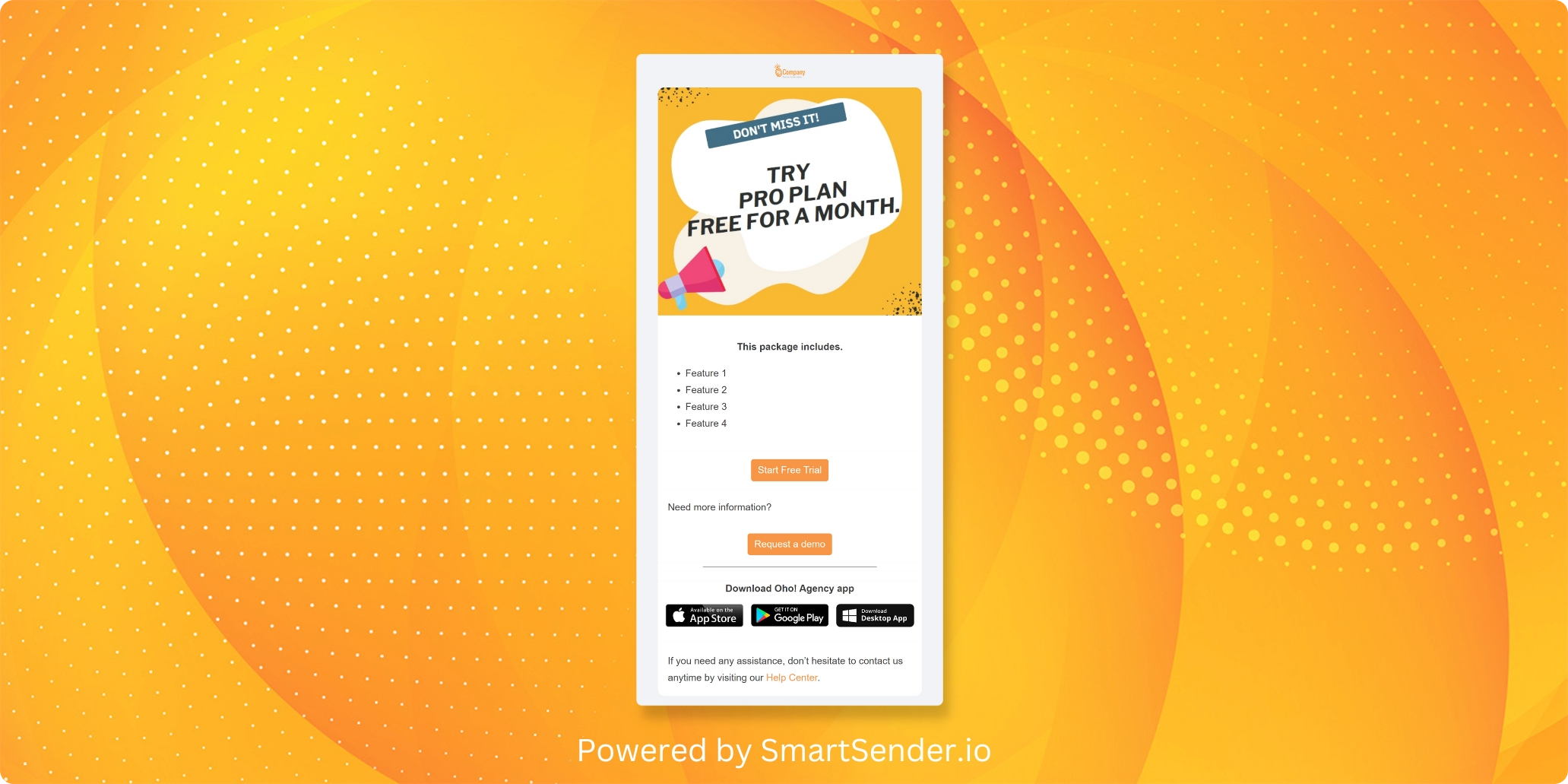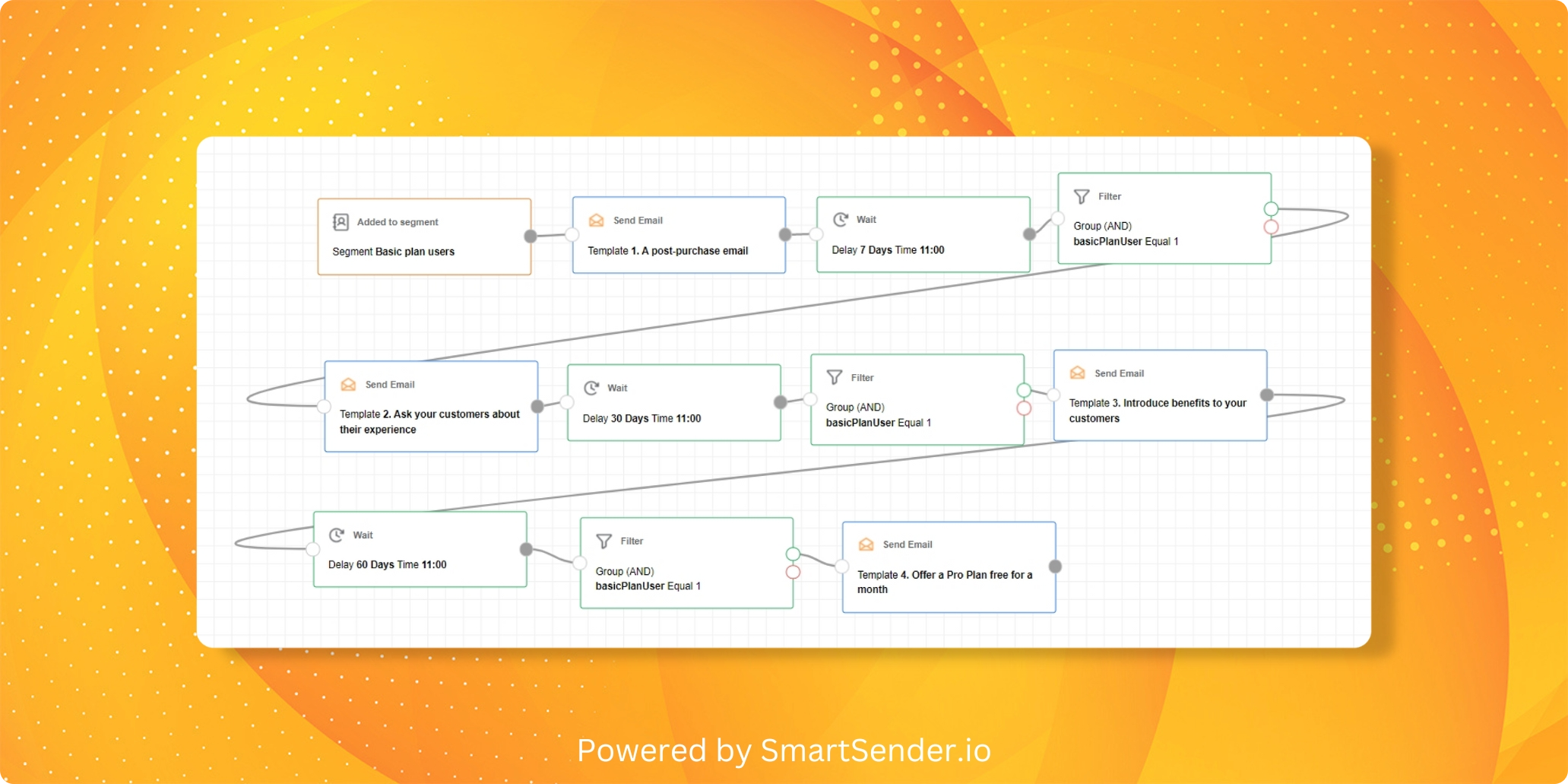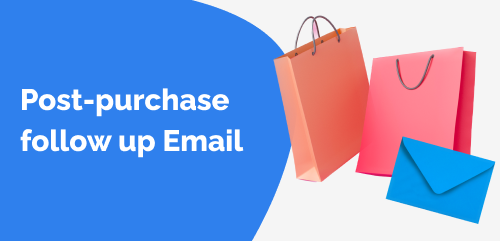Post-Purchase Follow Up Email Campaign
Preview the Workflow
Author:
Categories:
Tools:
Publication date:
Plan:
Description:
Post-purchase behavior describes the choices people take after making a purchase. It is the customer's reaction after the sale, and it's as important as the sale itself. Therefore, this is also a crucial stage in the customer journey.
You can use post-purchase behavior to motivate your customers to do business with you. As a result, you can save a lot of money in the long run.
For example, you can learn from your customers by sending a survey after they purchase to gather feedback and use that information to enhance their future buying decisions. This approach helps to increase retention and active customer revenue, reduce churn, and drive additional purchases.
Want to improve customer experiences after the checkout process compilation? In that case, let's discuss our workflow.
Consider a scenario where the customer has selected your product's Basic Plan. This workflow aims to showcase the advantages of the functionality of the current pricing plan and the features they may get by upgrading it.
The workflow starts with the "Added to segment" trigger. First, create a segment called "Basic plan users." If the value of the "basicPlanUser" variable is equal to 1, then the contact will automatically be added to the segment.
As soon as the contact is added to the segment, your customer will receive an email. With this email, you thank your customers for their purchase and give them some product benefits.
Next, the platform will wait seven days and automatically check whether the contact is still in the segment. No further actions are required if the contact is dropped from the segment. Otherwise, the platform will send an email, which will help you to ask for feedback from your customers.
In 30 days, the same check-up process will be repeated. In addition, a follow-up email will be sent. This email is used to offer a good-to-know feature.
After another 60 days, the check-up process will be repeated. Finally, if the contact is still in the segment, the last email will be sent to your customer with the Pro Plan upgrade offer.
You can send as many emails as needed based on your email content plan. However, keep the same interval between the campaign emails because SPAM filters pay special attention to randomly sent emails.

